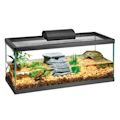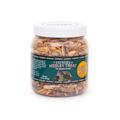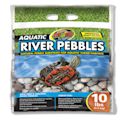Turtle Shop
1 - 46 of 46 results
Get It Today
Aqueon Standard Glass Aquarium Tank 20 Gallon Long
(722)
$49.99
Same Day Delivery EligibleBuy Online, Pick Up in Store
+ More Choices Available
Zoo Med Natural Maintenance Formula Aquatic Turtle Food
(178)
$10.99 – $20.99
Same Day Delivery Eligible+ More Choices Available
Tetra Reptomin Floating Food Sticks For Aquatic Turtles, Newts and Frogs
(160)
$7.49 – $73.99
Same Day Delivery EligibleAqueon Standard Glass Aquarium Tank 20 Gallon High
(288)
$49.99
Same Day Delivery EligibleBuy Online, Pick Up in StoreAqueon Standard Glass Aquarium Tank 29 Gallon
(461)
$79.99
Same Day Delivery EligibleBuy Online, Pick Up in Store
Tetra Reptomin Select-A-Food For Aquatic Turtles, Newts and Frogs, Variety Pack
(27)
$11.99
Same Day Delivery EligibleTetra Reptomin Jumbo Floating Food Sticks For Larger Aquatic Turtles and Amphibians
(43)
$19.99
Same Day Delivery Eligible
Turtle and Tortoise Shop
Whether you’re considering bringing home a turtle or tortoise as a new pet, or you’re looking to upgrade an existing habitat for your beloved reptile, you’ll find everything you need to keep your pet healthy and happy right here in our tortoise and turtle store.




